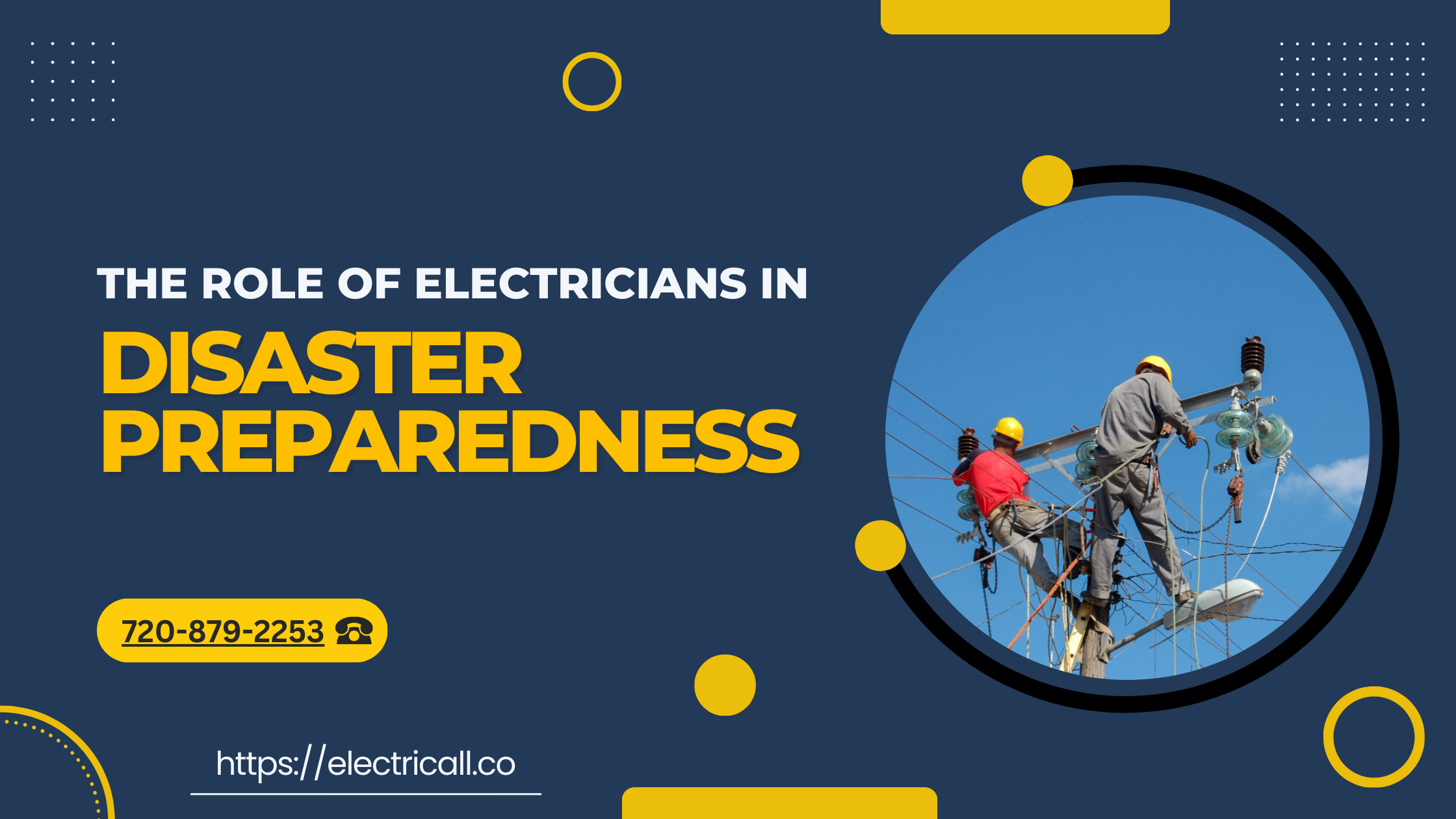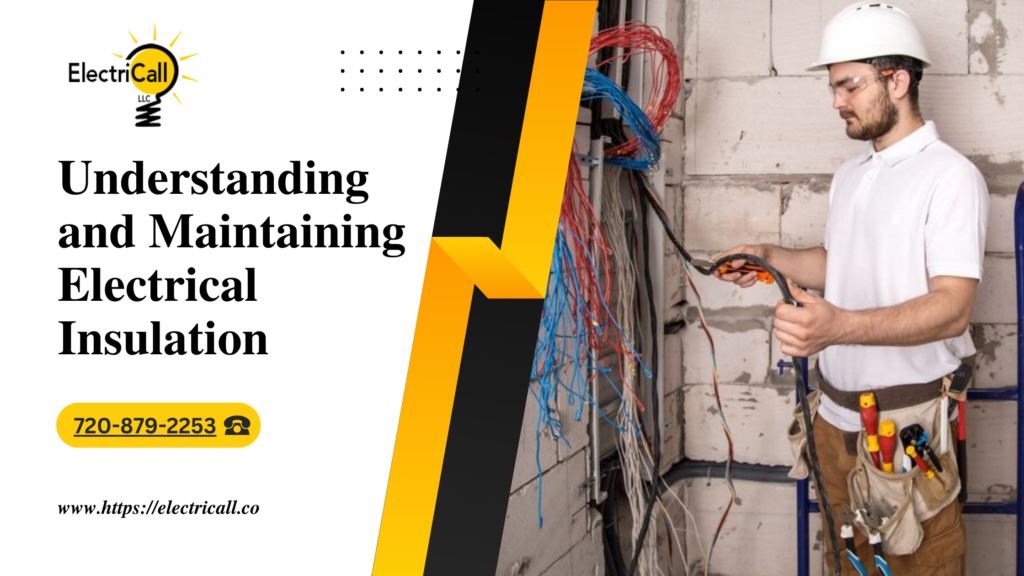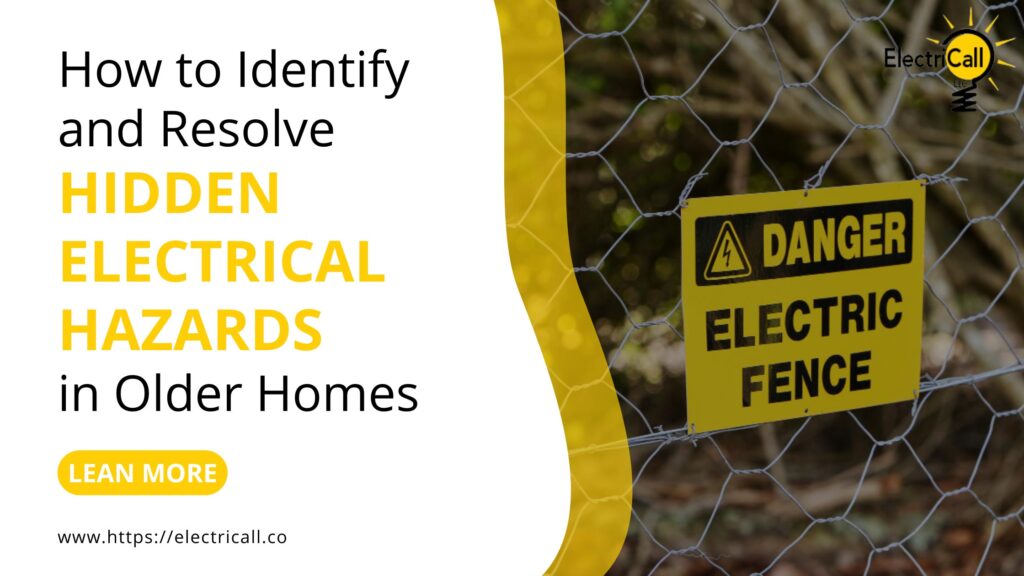
Electricians are part of the solution for their key roles in disaster preparedness. When natural disasters like hurricanes, flash floods, or damaging hail hit Colorado, electricians ensure the stability, safety, and restoration of electrical systems. Their expertise becomes invaluable as they work diligently to safeguard infrastructure, mitigate risks, and restore power, enabling communities to recover from disasters. Read more to learn about how electricians can help.
Preparing For Disaster
Electricians are instrumental in managing disasters. They collaborate with engineers, architects, and other disaster management teams to design, install, and maintain electrical systems that comply with stringent safety codes. Their involvement in construction projects ensures buildings have robust electrical setups that can withstand potential disasters.
In disaster-prone regions of Colorado, electricians help implement preventive measures. An electrician can secure infrastructure such as power grids, ensuring they are resilient to severe weather conditions or external threats. They also conduct regular inspections and maintenance to identify vulnerabilities and proactively address potential hazards. These inspections serve to identify potential points of failure in systems susceptible to natural disasters like hurricanes, earthquakes, or floods. With this knowledge, electricians can meticulously plan and implement measures to mitigate risks, whether this be reinforcing crucial components, installing protective devices, or conducting thorough maintenance to ensure optimal functionality.
Clear procedures for shutting down and restoring power during emergencies are formulated, enabling a swift and organized response when disaster strikes. Electricians engage in rigorous training exercises, simulating various disaster scenarios and practising response strategies to ensure preparedness and seamless coordination with other emergency response units.
Integrating cutting-edge technologies also becomes a cornerstone of their preparedness efforts. Electricians leverage technological advancements from smart grid systems for remote monitoring to predictive maintenance tools to enhance preparedness and response capabilities. They also deploy redundant systems and backup power solutions, such as generators and microgrids, to prevent technology disasters caused by power outages.
Aside from professional and industry developments, community engagement and education are equally vital facets of their preparations. Electricians actively participate in outreach programs, educating the public about electrical safety measures and disseminating information on actions to take during disasters. Their collaboration with local authorities helps develop evacuation plans involving safe power shutdowns to prevent electrical hazards during crises.
Amid a Crisis
When disasters strike, electricity disruptions can worsen an already challenging situation. Electricians are among the first responders, assessing damages, initiating rapid responses, working tirelessly to restore power, prioritize emergency services, and facilitate communication networks. Their quick intervention is crucial for hospitals, emergency shelters, and essential service providers to function optimally.
During natural disasters, electricians navigate hazardous conditions to assess electrical damages, isolate affected areas, and make them safe for repair. They must also coordinate efforts with disaster response teams to ensure a systematic power restoration to affected areas.
Not only do electricians provide efforts towards the immediate needs of a community after a disaster, but they also contribute to rebuilding and reinforcing electrical infrastructure, incorporating lessons learned from the crisis to fortify systems against future disasters. Their insights into preventive measures and enhanced resilience become instrumental in electrical disaster prevention.
Amidst a crisis, electricians stand as pillars of resilience. They work tirelessly to bring light back into darkened spaces, restore functionality to essential services, and pave the way for communities to rebuild.
Innovations in Disaster Response
Technology advancements have revolutionized electricians’ roles in disaster preparedness and recovery. Smart grids, for instance, enable remote monitoring and the faster identification of faults, expediting response times, particularly during crises. Additionally, the integration of renewable energy sources, including solar and wind power, has brought about reliable and decentralized energy systems that are much more capable of withstanding disasters. The reliability of such upgrades reduces dependency on centralized power sources and boosts any community’s resilience.
After disaster strikes, electricians help by developing and deploying generators, battery storage systems, and microgrids, which provide support during outages and keep essential services operational to aid in the swift recovery of communities.
With a keen eye for technological advancements, electricians have been pivotal in developing and implementing innovative solutions that enhance resilience and response capabilities. One of the most significant innovations is integrating smart grid systems. These systems enable remote, real-time monitoring and rapid identification of faults in electrical networks during disasters.
Electricians’ mindsets extend beyond infrastructure to encompass predictive maintenance technologies. They can identify potential vulnerabilities in electrical systems through predictive analytics and monitoring tools before disasters strike, which helps reinforce critical components and mitigate risks, thereby significantly reducing the impact of disasters.
Furthermore, these electricians continually explore new methodologies and materials to enhance the resilience of electrical infrastructure. From robust insulation materials to more durable wiring, their constant pursuit of innovation aims to build systems capable of withstanding the most severe disasters.
With disasters constantly threatening Colorado, electricians’ role in driving disaster response innovations is fundamental in shaping resilient societies. A local electrician in Arvada can leverage technology and embrace renewable energy to help mitigate the impact of disasters.
Community Education and Preparedness
Empowering individuals and businesses with the knowledge to handle electrical issues during disasters can significantly reduce risks and mitigate the impact of crises. That’s why, beyond their technical expertise, electricians also conduct workshops, seminars, and training sessions to educate the public on electrical safety measures, emergency protocols, and the importance of preparedness. These sessions cover various topics, from basic electrical safety practices to more advanced guidance on shutting off power and identifying potential hazards during disasters. Empowering individuals and businesses with the knowledge to handle electrical issues during disasters can significantly reduce risks and mitigate the impact of crises.
Electricians collaborate closely with local authorities and disaster management teams to develop comprehensive evacuation plans incorporating safe power shutdown procedures. This ensures that communities are well-prepared and informed, minimizing the risk of electrical hazards during crises.
In times of calm, electricians proactively engage in public awareness campaigns, distributing informational materials, creating online resources, and participating in community events. Electricians may also spread awareness about electrical safety measures and advocate for proactive steps that individuals can take to safeguard themselves and their properties. Their commitment to ensuring that everyone can access the information necessary to make a community means that they tailor educational materials and outreach programs to cater to the specific needs of groups such as the elderly and those with special needs, ensuring that everyone is equipped to handle electrical challenges in emergencies.
By actively engaging with the community, electricians empower individuals and businesses to approach electrical safety proactively. Their approach to education and preparedness fosters a safety-conscious culture that is invaluable in mitigating risks and minimizing the impact of electrical hazards during disasters.
Electricians Play a Crucial Role
The role of any electrician near Denver in disaster preparedness is multifaceted and indispensable. Their expertise, dedication, and quick response help minimize disruptions ensure safety and facilitate communities’ recovery in the aftermath of disasters. As the world faces both natural and human-induced disasters, recognizing and supporting the vital role of any Arvada electrician becomes paramount in building resilient and prepared societies.



